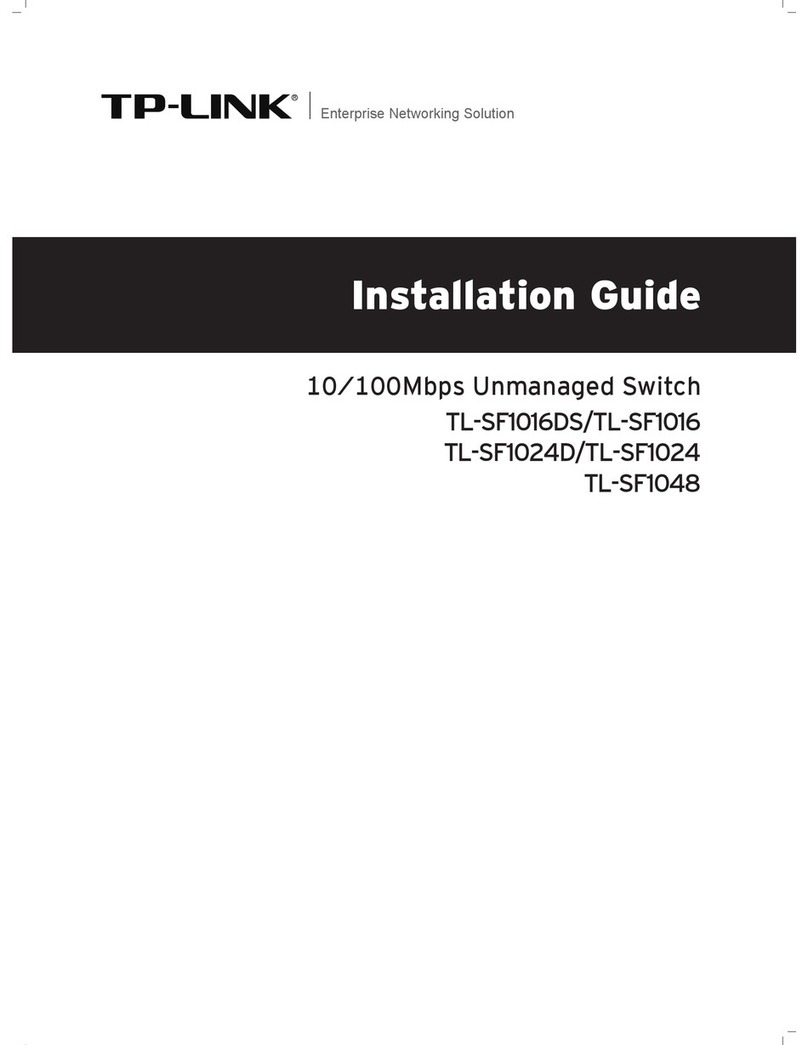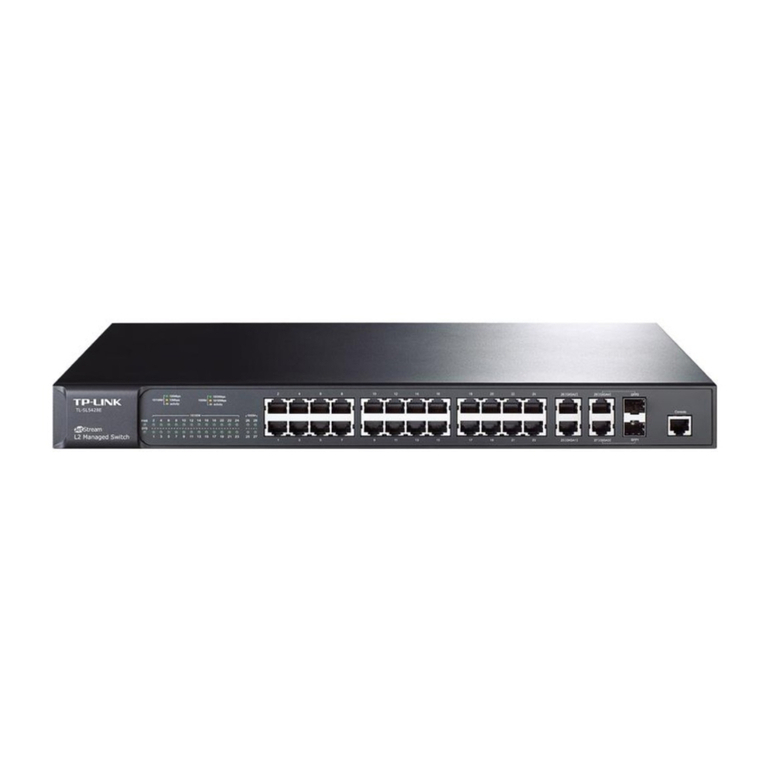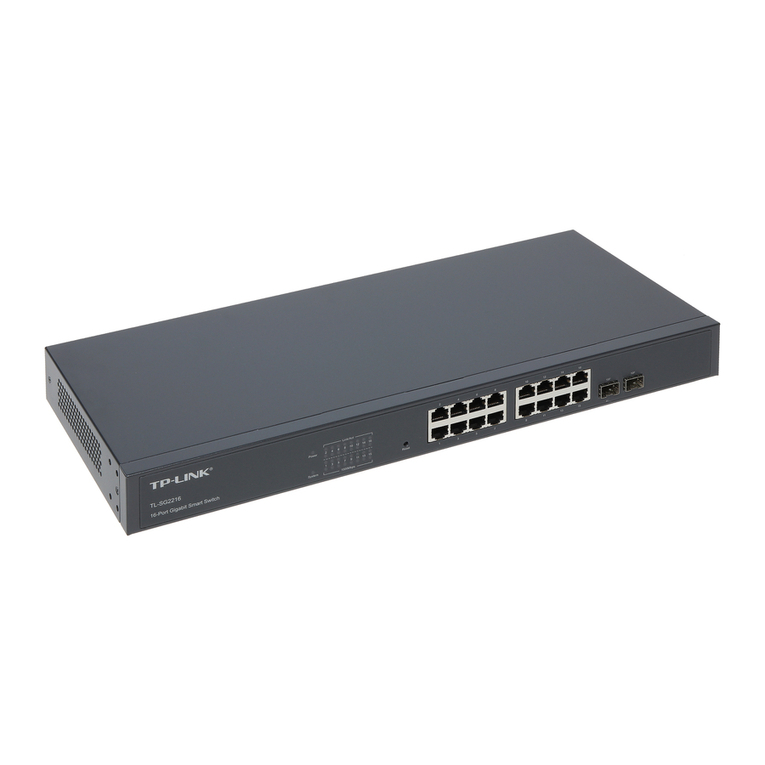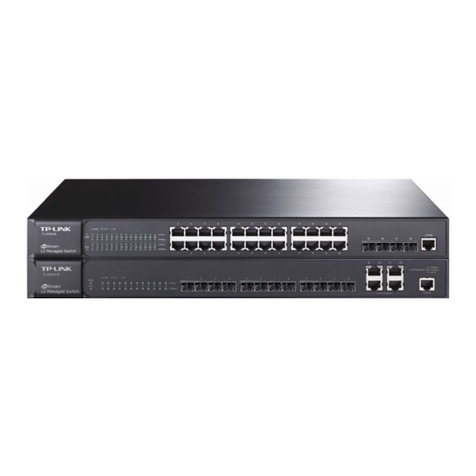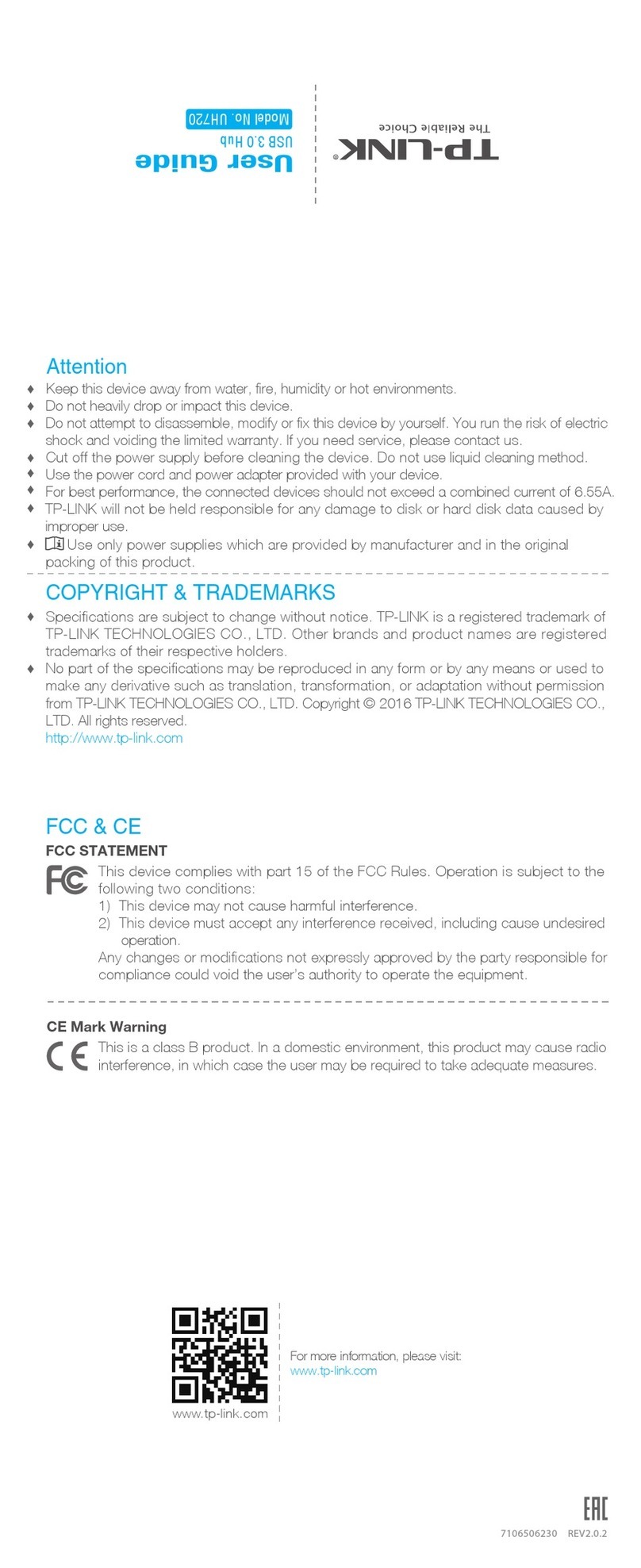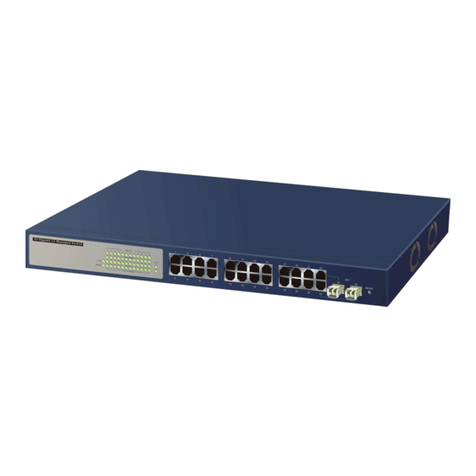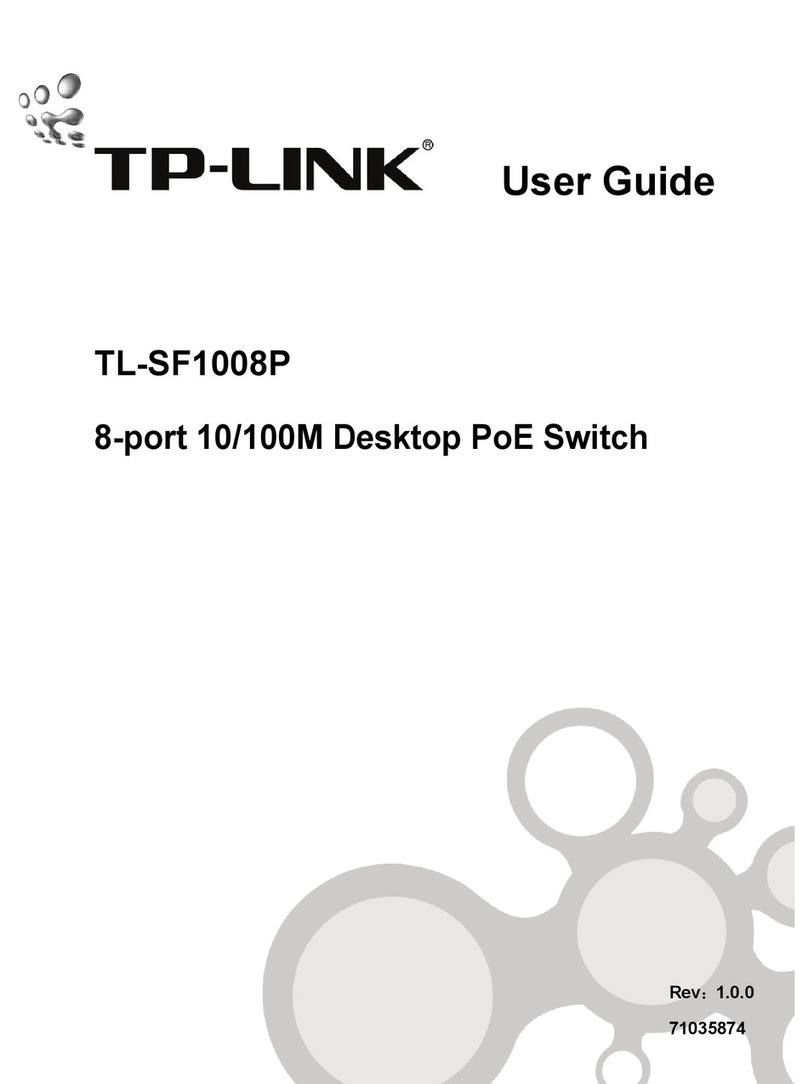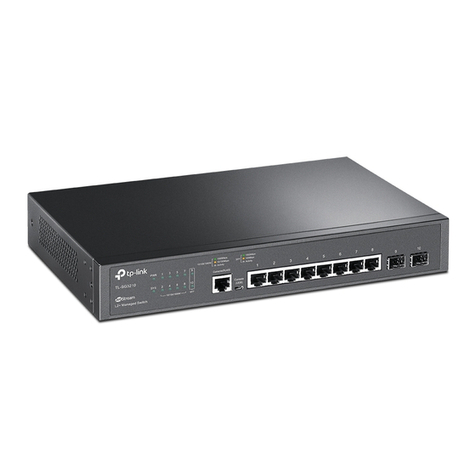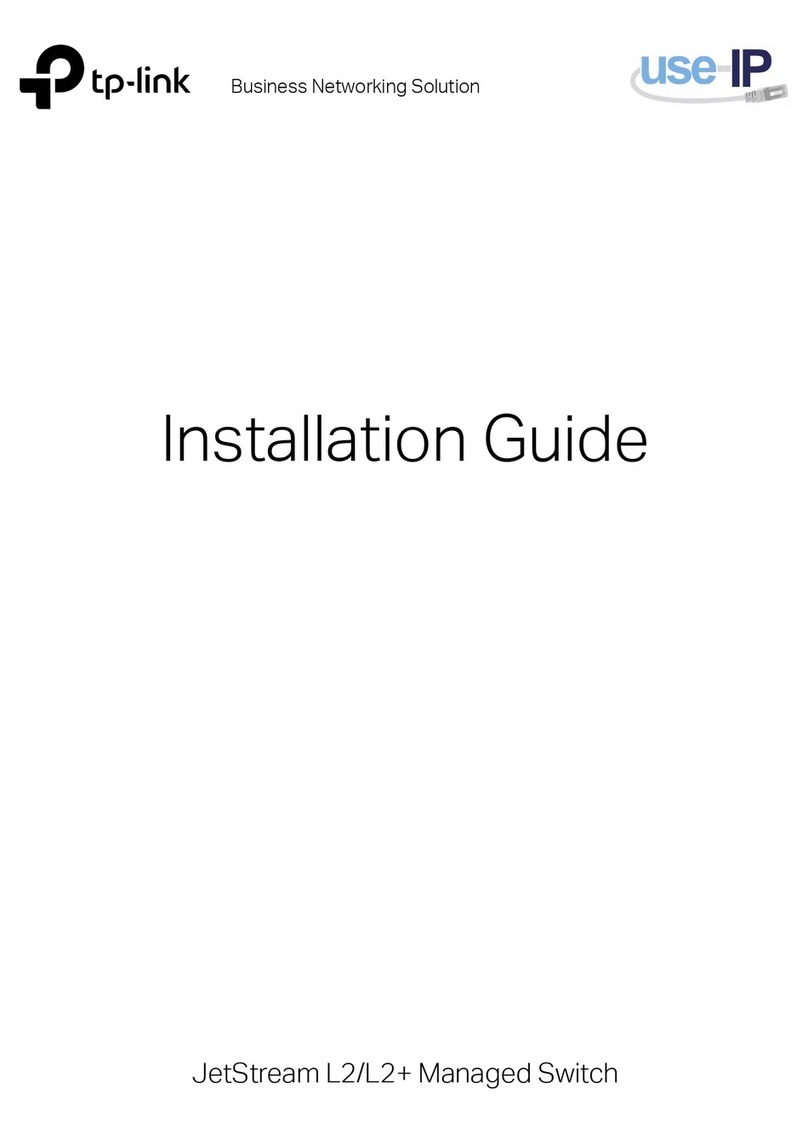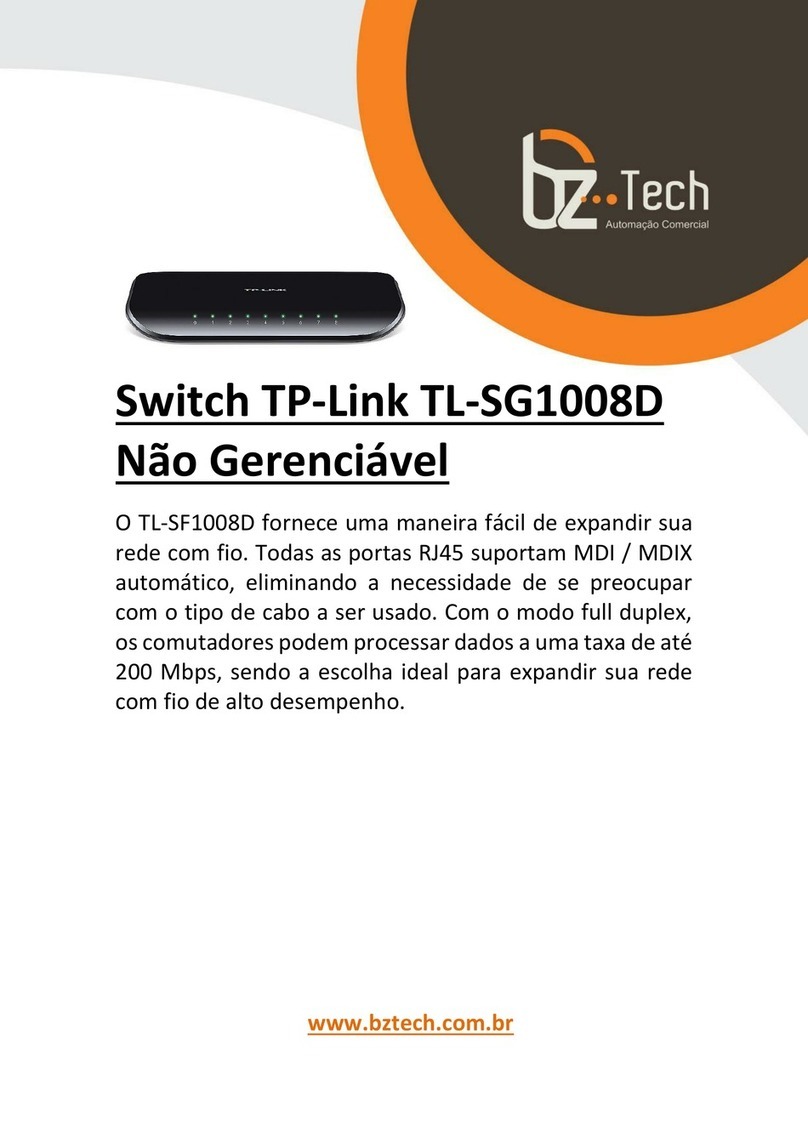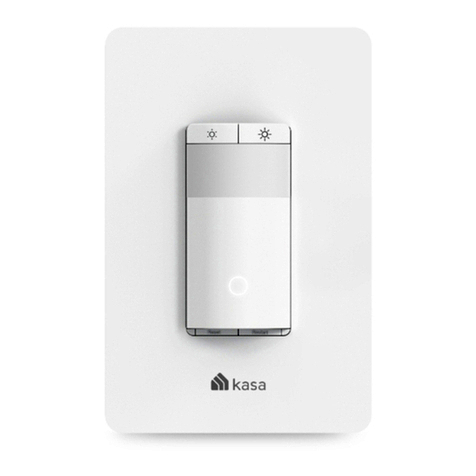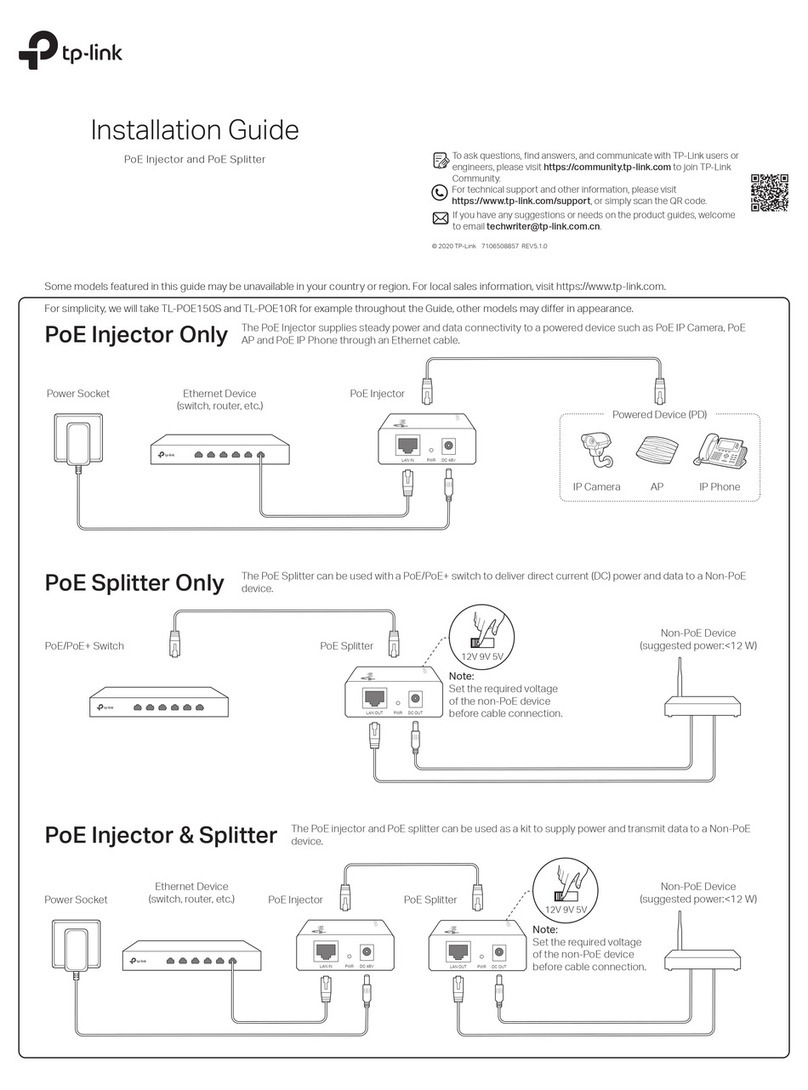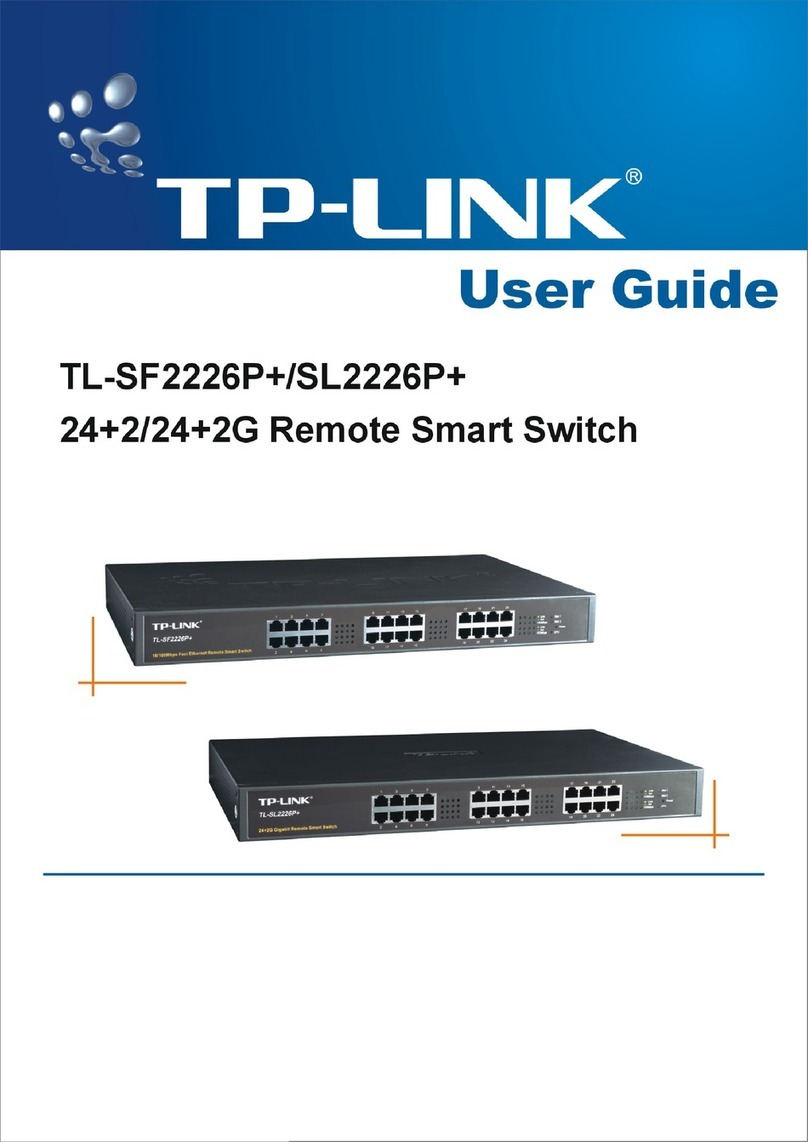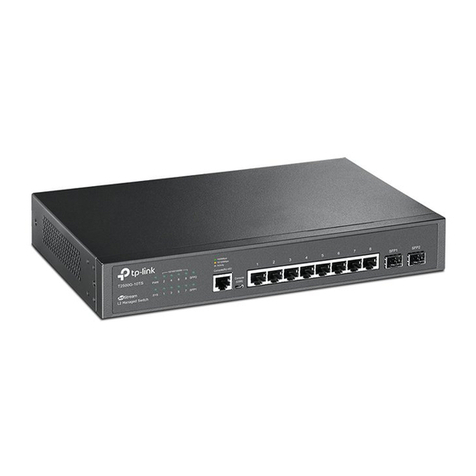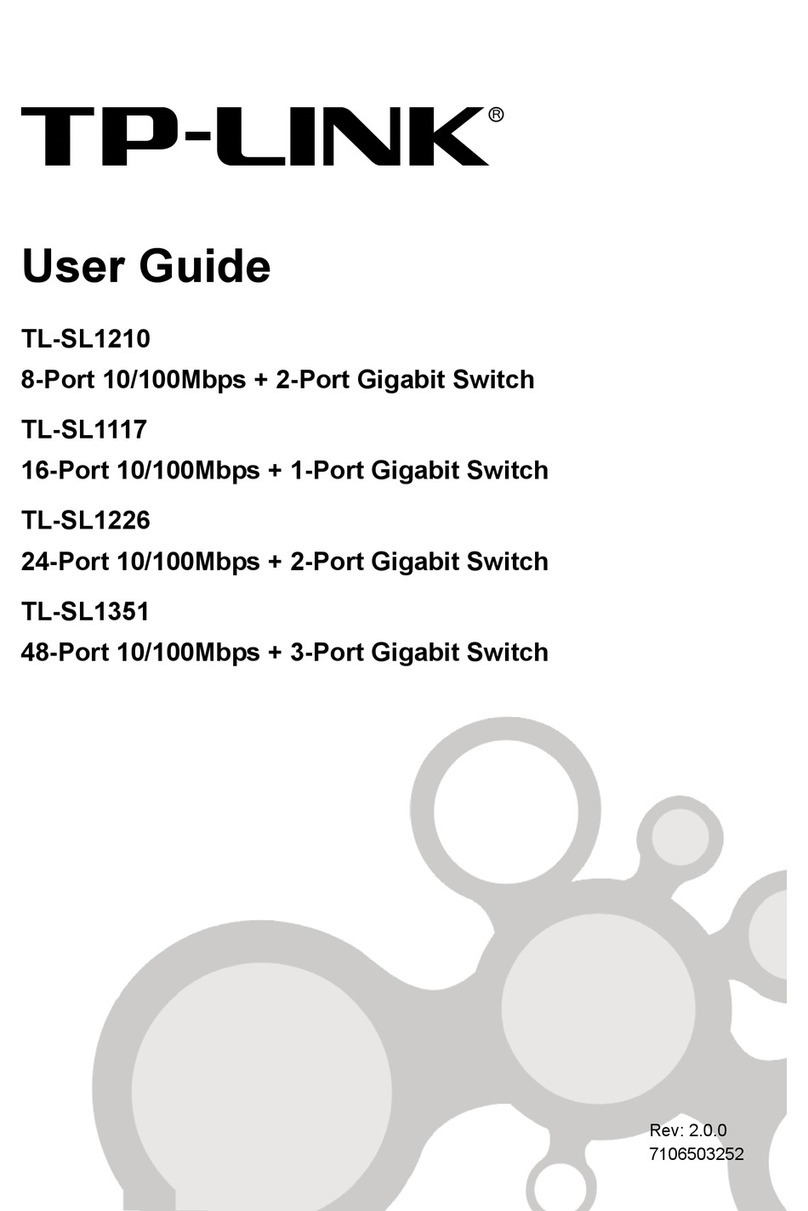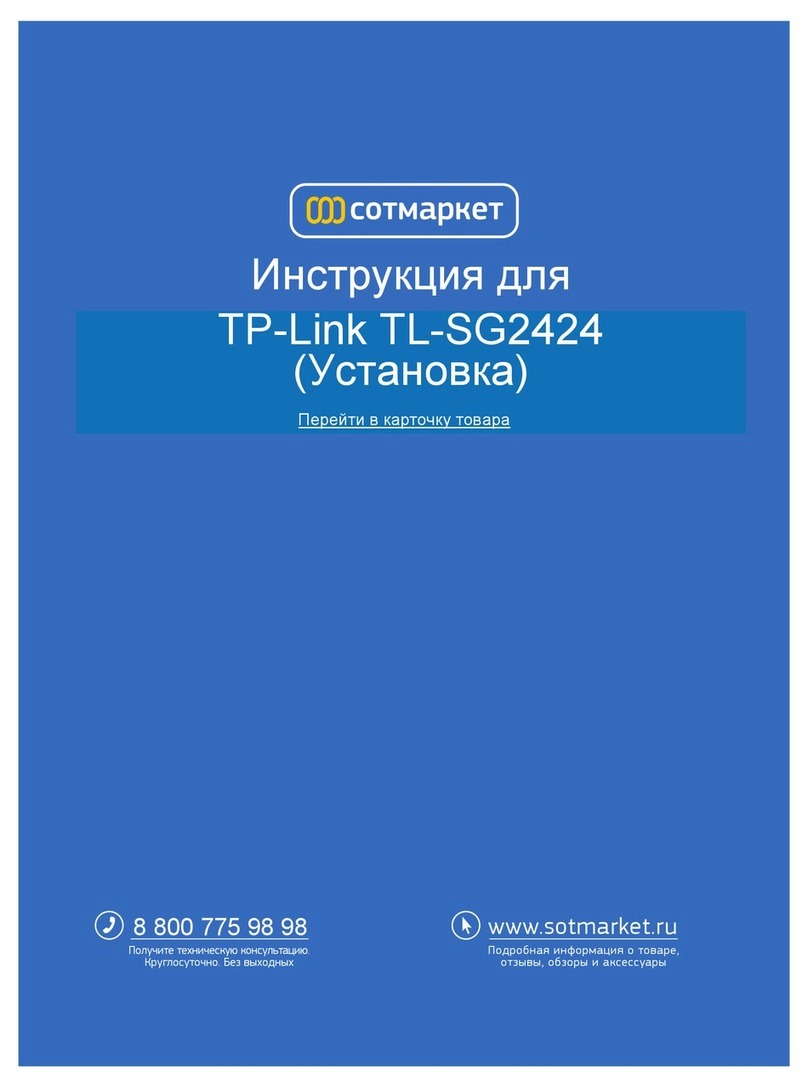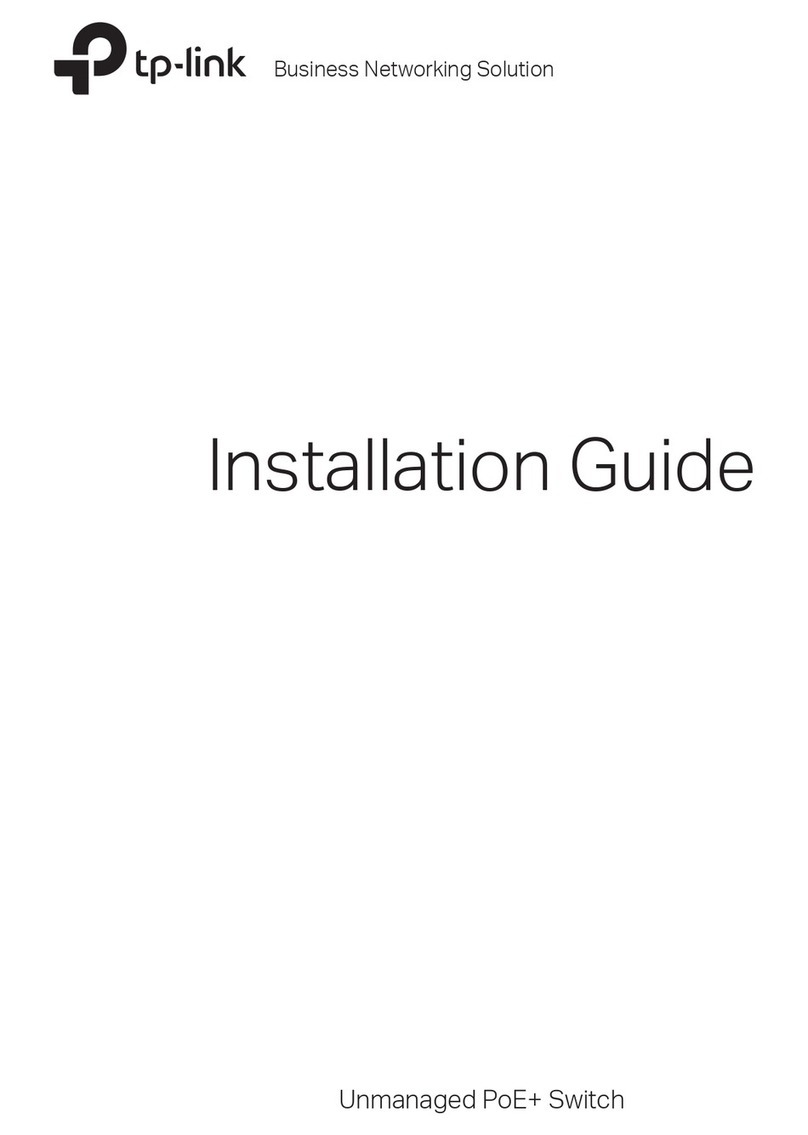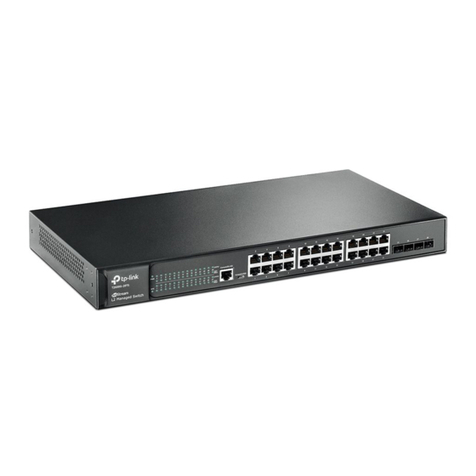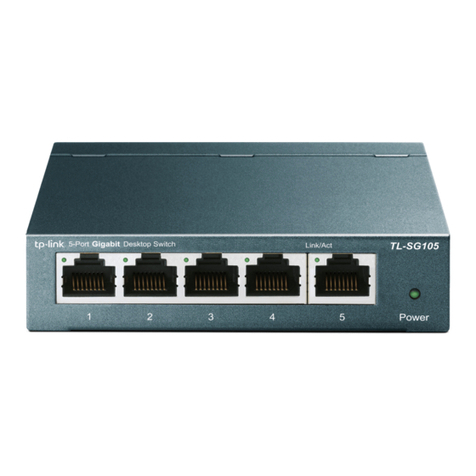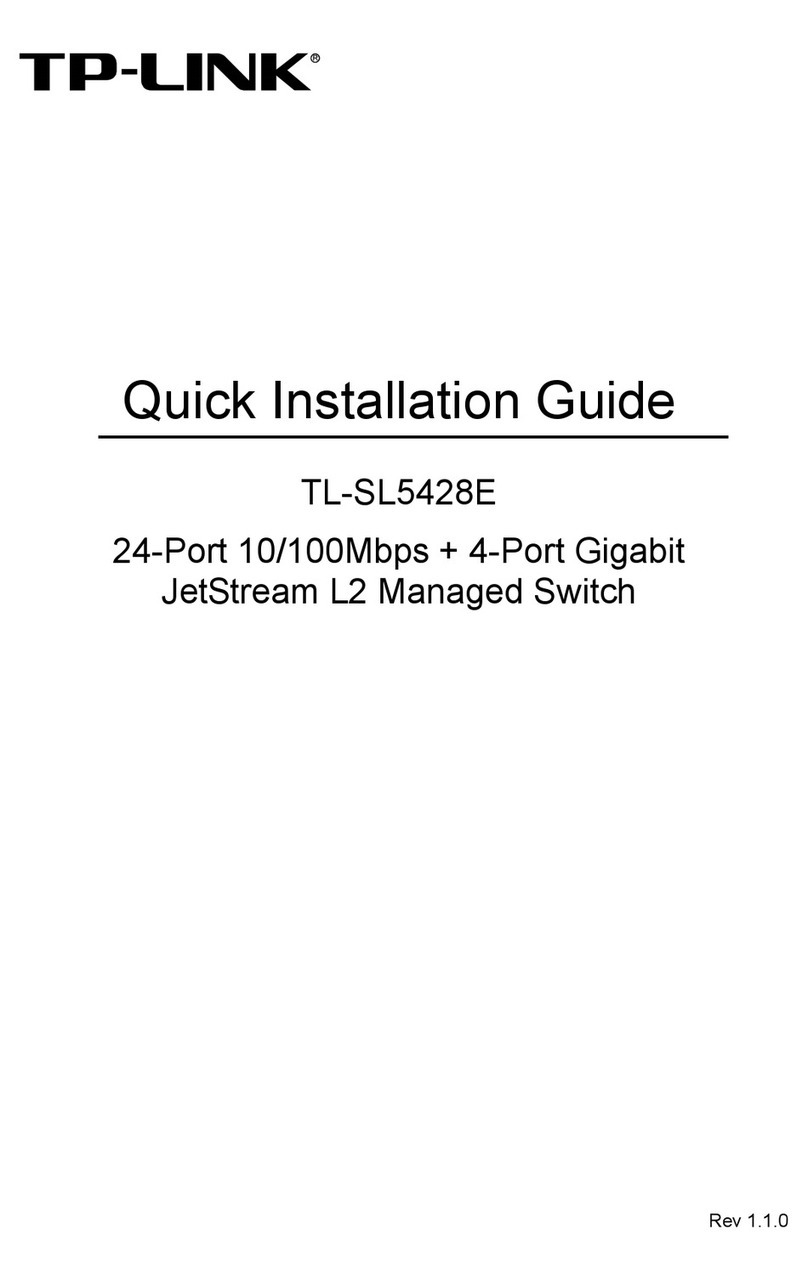LED Explanation
COPYRIGHT & TRADEMARKS
IEEE802.3, 802.3u, 802.3ab, 802.3x, 802.3af
CSMA/CD
8 10/100/1000Mbps RJ45 Ports
Auto-Negotiation/Auto MDI/MDIX
10BASE-T: UTP category 3, 4, 5 cable (maximum
100m); EIA/TIA-568 100
Ω
STP (maximum 100m)
100BASE-TX: UTP category 5, 5e cable (maximum
100m); EIA/TIA-568 100
Ω
STP (maximum 100m)
1000BASE-TX: UTP category 5e cable or above
(maximum 100m); EIA/TIA-568 100
Ω
STP (maximum
100m)
PoE Ports: Port1- Port4
Total Power Supply: 53W
16Gbps
8K
Store-and-Forward
External Power Adapter
(Input: 100-240VAC, 50/60Hz
Output: 48VDC /1.25A)
5.8W (max. no PoE device connected)
58.8W (max. with 53w PoE device connected)
Standard
Protocol
Backbone Bandwidth
MAC Address Table
Transfer Method
Power Supply
Consumption
Certification
Operating Temperature
Storage Temperature
Operating Humidity
Storage Humidity
FCC, CE, RoHS
0˚C~40˚C (32˚F~104˚F)
-40˚C~70˚C (-40˚F~158˚F)
10%~90% non-condensing
5%~90% non-condensing
Environmental and Physical Specifications
General Specifications
Interface
Network Media (Cable)
PoE Ports (RJ45)
This equipment has been tested and found to
comply with the limits for a Class A digital
device, pursuant to part 15 of the FCC Rules.
These limits are designed to provide
reasonable protection against harmful
interference when the equipment is operated in
a commercial environment. This equipment
generates, uses, and can radiate radio
frequency energy and, if not installed and used
in accordance with the instruction manual, may
cause harmful interference to radio
communications. Operation of this equipment
in a residential area is likely to cause harmful
Specifications are subject to change without
notice. is a registered trademark
of TP-LINK TECHNOLOGIES CO., LTD. Other
brands and product names are trademarks or
registered trademarks of their respective holders.
No part of the specifications may be reproduced
Adapter shall be installed near the equipment
and shall be easily accessible.
Avoid water and wet locations.
Don’t disassemble the product, or make
repairs yourself. You run the risk of electric
shock and voiding the limited warranty. If you
need service, please contact us.
in any form or by any means or used to make
any derivative such as translation,
transformation, or adaptation without
permission from TP-LINK TECHNOLOGIES
CO., LTD. Copyright © 2015 TP-LINK
TECHNOLOGIES CO., LTD. All rights reserved.
http://www.tp-link.com
interference in which case the user will be
required to correct the interference at his own
expense.
This device complies with part 15 of the FCC
Rules. Operation is subject to the following two
conditions:
1) This device may not cause harmful
interference.
2) This device must accept any
interference
received, including interference that may cause
undesired operation.
Any changes or modifications not expressly
approved by the party responsible for
compliance could void the user’s authority to
operate the equipment.
SAFETY Information
FCC STATEMENT
This is a class A product. In a domestic
environment, this product may cause radio
interference, in which case the user may be
required to take adequate measures.
CE Mark Warning
Frequently Asked Questions (FAQ)
The Power LED should be lit when the power system is working normally.
If the Power LED is not lit, please check as follows:
A1:
Make sure the AC power cord is connected to the switch with power
source properly.
A2:
Make sure the voltage of the power supply meets the requirements of
the input voltage of the switch.
A3:
Make sure the power source is on.
Q1. The Power LED is not lit.
It is recommended that you check the following items:
A1:
Make sure that the cable connectors are firmly plugged into the switch
and the device.
A2:
Make sure the connected device is turned on and working well.
A3:
The cable must be less than 100 meters long (328 feet).
Q2. The Link/Act LED is not lit when a device is connected to
the corresponding port.
Q3. Why is port 4 not supplying power for PoE devices?
Link/Act (port 1-8)Power
On: 46W≤Total power supply < 53W
Flashing: Total power supply ≥ 53W
Off: Total power supply < 46W
PoE Max
On: PoE power provided
Flashing: PoE fault
Off: No PoE power provided
PoE Status (port 1-4)
On: Power on
Off: Power off
On: Link present but no activity
Flashing: Transmitting/receiving data
Off: No link
If connected PoE device’s total power consumption exceeds 53W, the
system will cut off the power to port 4. For example, port 1, 2 and 4 are
consuming 15.4W respectively, if an additional PoE device with 12W is
inserted to port 3, the system will cut off the power of port 4 to compensate
for the overload.
1000Mbps (port 1-8)
On: Connecting to a 1000M device
Off: Connecting to a 10/100M deivce
or no link
